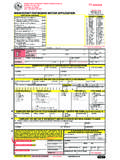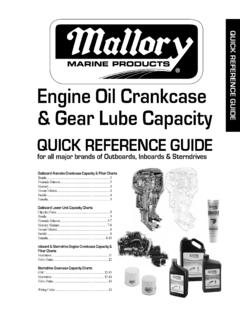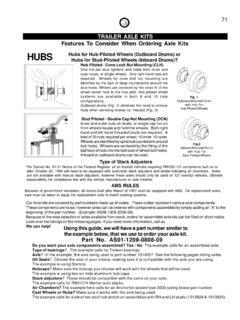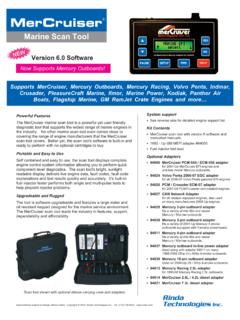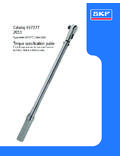Transcription of Technical Information - Guardian Industries
1 Technical InformationWhat you need to know toBUILD WITH LIGHT InTroDUcTIon _____1 Types of GLass _____ 2annealed Glass Heat-strengthened Glass Tempered Glass Laminated Glass Insulating Glass Warm-edge spacer Tinted Glass vs. Low-e coated Glass spandrel Glass common Glass configurations Hurricane Glass Bird-friendly Glass Turtle Glass performance cHaracTerIsTIcs of GLass _____ 7 energy conservation and coated GlasssunGuard advanced architectural GlassGlass performance: spectral Graphs acoustical Information How to View/evaluate Glass Hand samples faBrIcaTIon anD GLazInG _____ 17 optical Distortion Thermal Breakage construction-phase risks of Thermal Breakagestatistical probability of Glass BreakageHeat-soakingWind Load Bending sunGuard coated Glass strain pattern moir pattern Glass edge Types Glass Handling, storage, maintenance and cleaning coated Glass: minimum & maximum sizes oversize Glass.
2 Insulating and Heat-treatment considerations Glazing GuidelinesQuality/Inspection Guidelines oTHer resoUrces _____ 26architectural Tools standards Used in architectural Glass Warranty GLossary of Terms _____ 28architectural GlassIntroductionarchitects, designers and builders have more choices of glass today than ever before. Those choices can make a tremendous difference in your project s cost, energy efficiency and environmental impact. so you need accurate, detailed Information to ensure that you choose the right brochure provides Technical Information including performance capabilities and glazing guidelines for all types of sunGuard advanced architectural Glass from Guardian .
3 It also contains instructions for the proper handling, maintenance and cleaning of the glass before, during and after building construction. We believe that you ll find most of the answers you need in this brochure, but you re always welcome to call us at 1-866-GuardsG (482-7374) to consult with a sunGuard advanced architectural Glass specialist or to order a glass : Ben BenschneiderTypes of GlassGetting the right type of glass or the right combination of types can be critical to the success of your project.
4 This section defines the various kinds of glass, how they re made, and their strengths and characteristics. It also diagrams construction techniques to show how different glass types can be combined for the desired heat, light and insulation properties. anneaLeD GLassfloat glass (also called flat glass) that has not been heat-strengthened or tempered is annealed glass. annealing float glass is the process of controlled cooling to prevent residual stress in the glass and is an inherent operation of the float glass manufacturing process.
5 Annealed glass can be cut, machined, drilled, edged and GLassHeat-strengthened (Hs) glass has been subjected to a heating and cooling cycle and is generally twice as strong as annealed glass of the same thickness and configuration. Hs glass must achieve residual surface compression between 3,500 and 7,500 psI for 6mm glass, according to asTm c 1048. please contact Guardian regarding thicker glass standards. Hs glass has greater resistance to thermal loads than annealed glass and, when broken, the fragments are typically larger than those of fully tempered glass and initially may remain in the glazing opening.
6 Heat-strengthened glass is not a safety glass product as defined by the various code organizations. This type of glass is intended for general glazing, where additional strength is desired to withstand wind load and thermal stress. It does not require the strength of fully tempered glass, and is intended for applications that do not specifically require a safety glass product. When heat-treated glass is necessary, Guardian Glass recommends the use of heat-strengthened glass for applications that do not specifically require a safety glass product.
7 Hs glass cannot be cut or drilled after heat-strengthening and any alterations, such as edge-grinding, sandblasting or acid-etching, can cause premature failure. TempereD GLassfully tempered glass is approximately four times stronger than annealed glass of the same thickness and configuration, and residual surface compression must be over 10,000 psI for 6mm, according to asTm c 1048. please contact Guardian for thicker glass standards. When broken, it will break into many relatively small fragments, which are less likely to cause serious injury.
8 The typical process to produce tempered glass involves heating the glass to over 1,000 degrees f, then rapidly cooling to lock the glass surfaces in a state of compression and the core in a state of tension as shown in the diagram. 2 CompressionTensionGlassThickness(t = 100%)0 Stress 20% (t)Approximate (t)0 Stress 20% (t)60% (t) Guardian sunGuardTypes of GLassTypes of GLass3 Guardian sunGuardTempered glass is often referred to as safety glass because it meets the requirements of the various code organizations that set standards for safety glass.
9 This type of glass is intended for general glazing, and safety glazing such as sliding doors, storm doors, building entrances, bath and shower enclosures, interior partitions and other uses requiring superior strength and safety properties. Tempered glass cannot be cut or drilled after tempering, and any alterations, such as edge-grinding, sandblasting or acid-etching, can cause premature failure. LamInaTeD GLassLaminated glass is two or more lites (pieces) of glass permanently bonded together with one or more plastic interlayers (pVB) using heat and pressure.
10 The glass and interlayers can be a variety of colors and thicknesses designed to meet building code standards and requirements as necessary. Laminated glass can be broken, but the fragments will tend to adhere to the plastic layer and remain largely intact, reducing the risk of injury. Laminated glass is considered safety glass because it meets the requirements of the various code organizations that set standards for safety. Heat-strengthened and tempered glass can be incorporated into laminated glass units to further strengthen the impact resistance.

